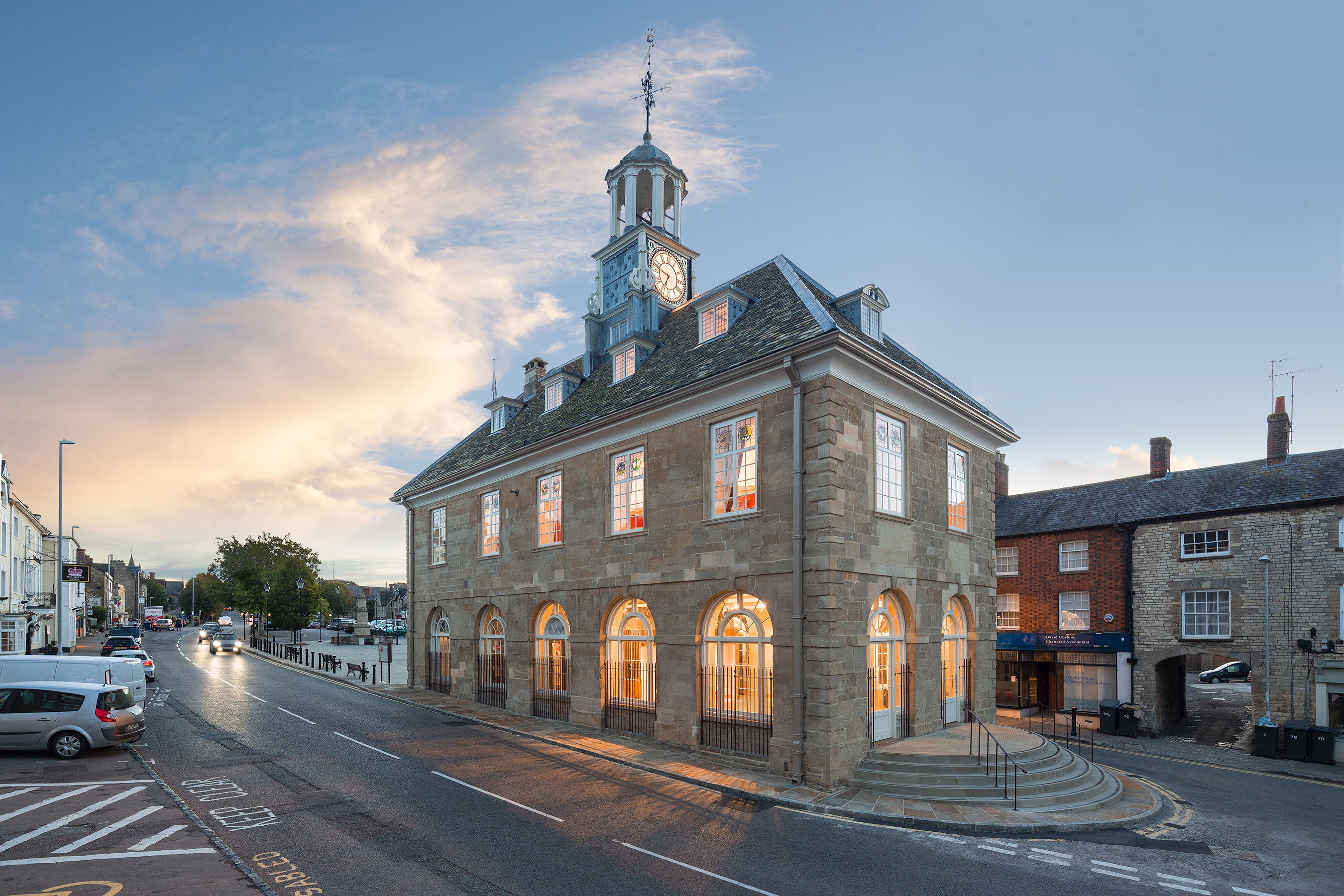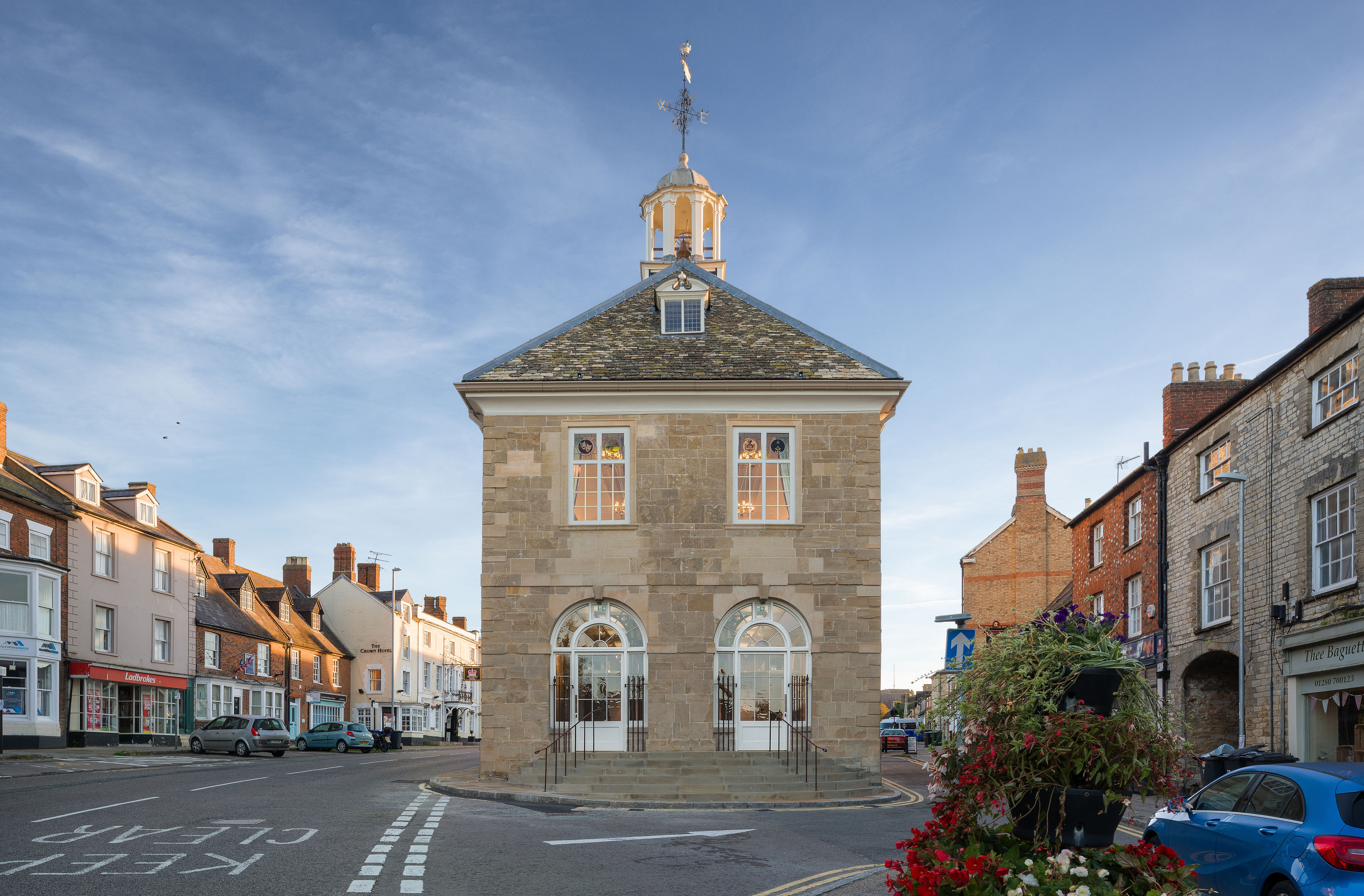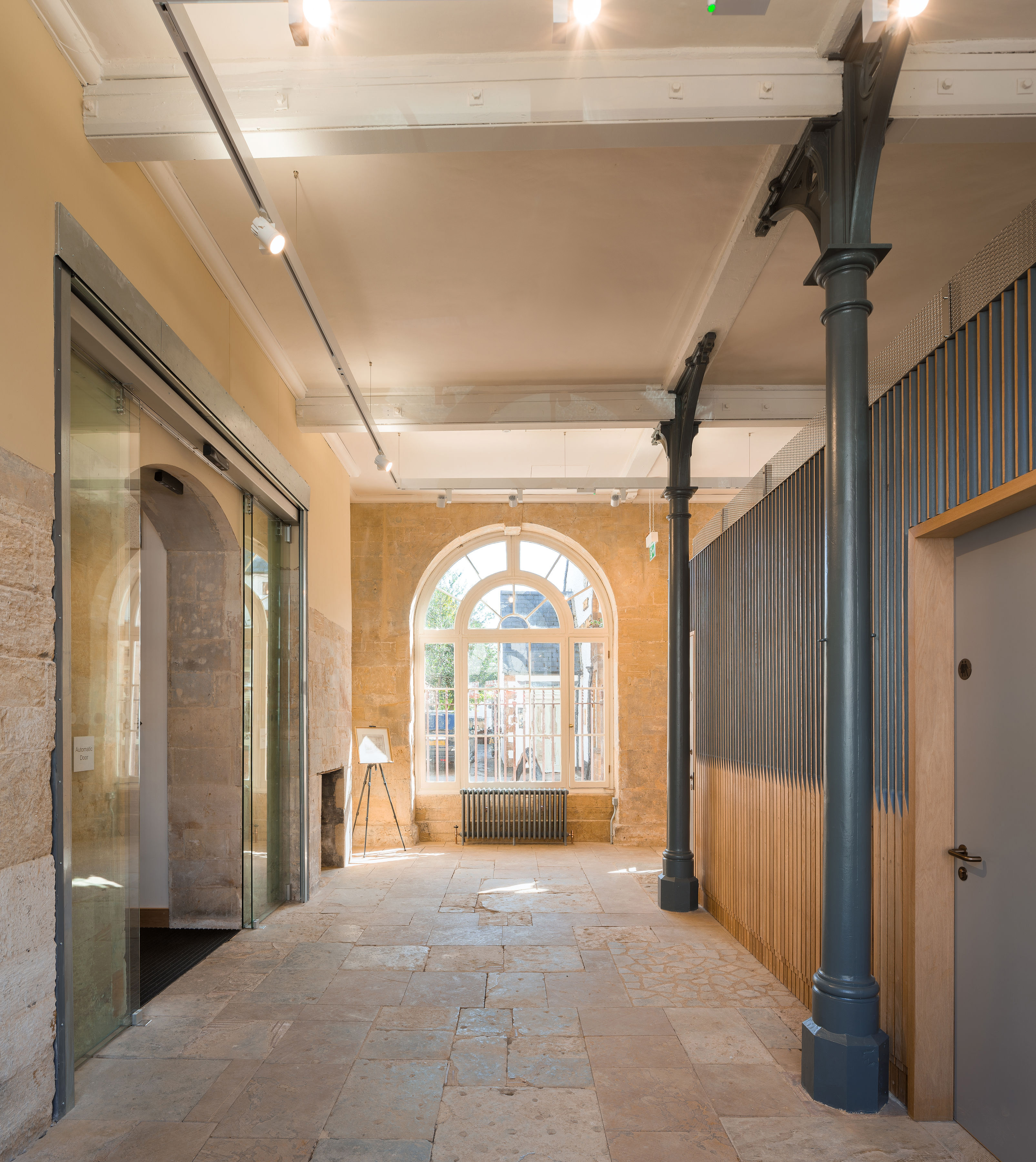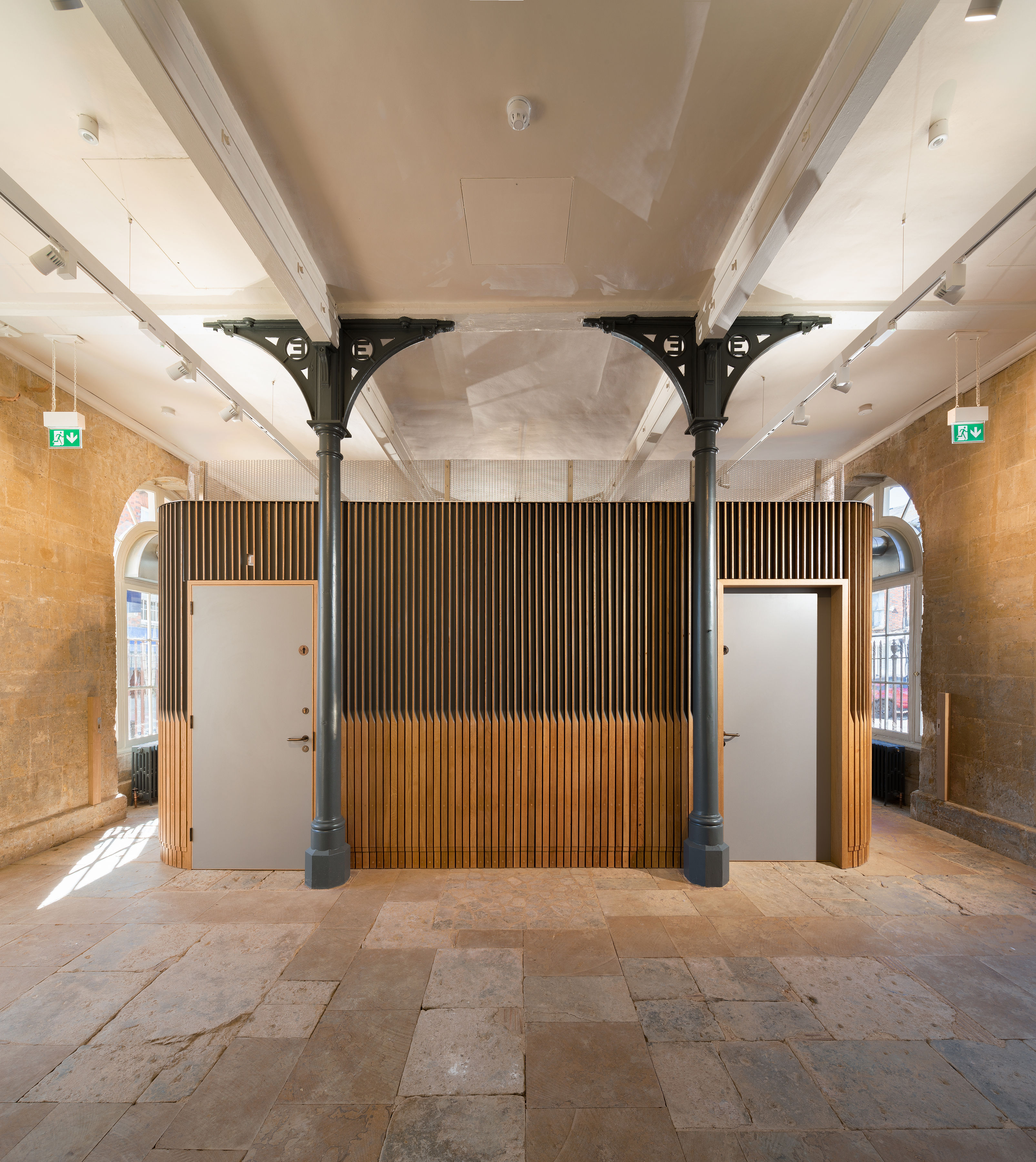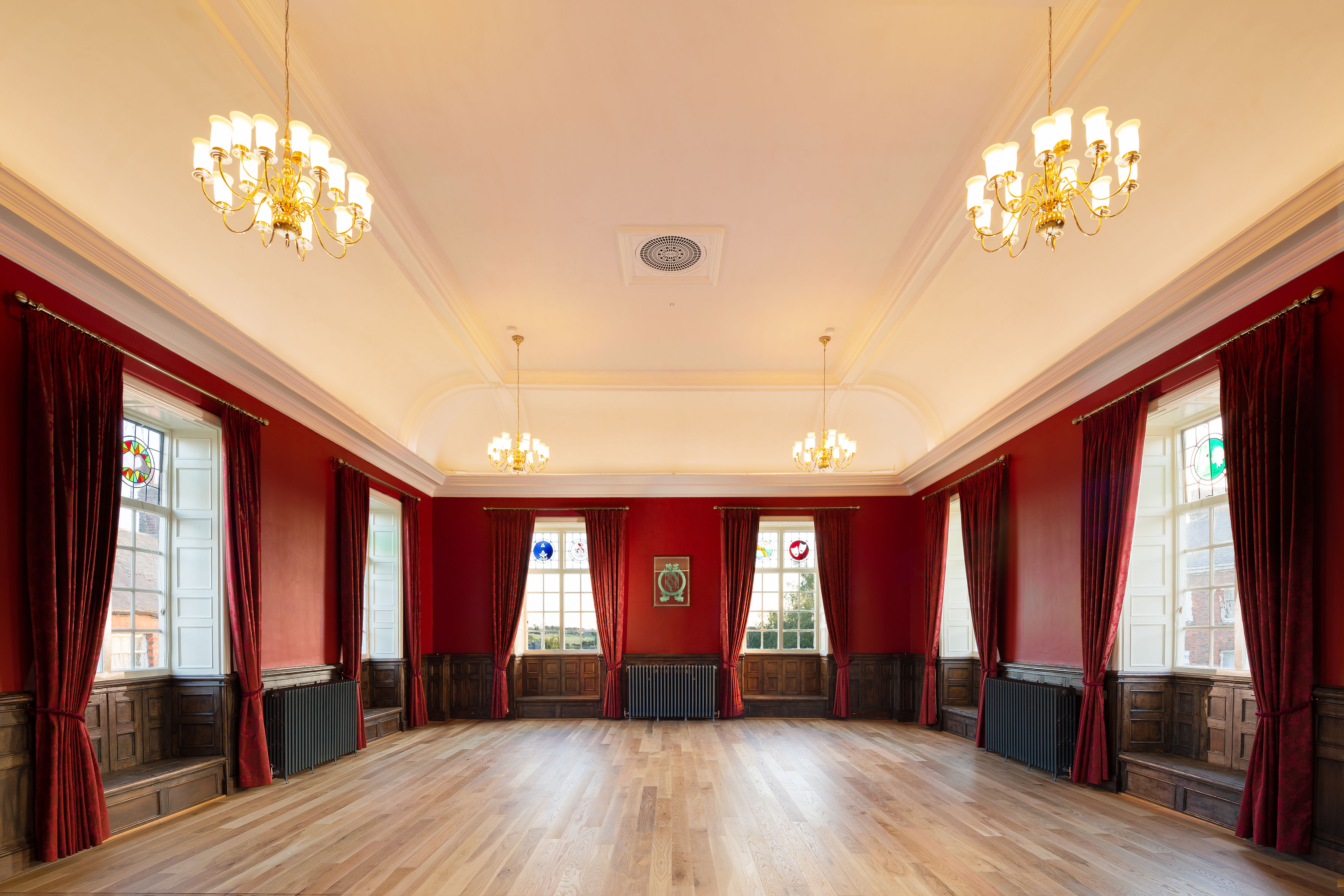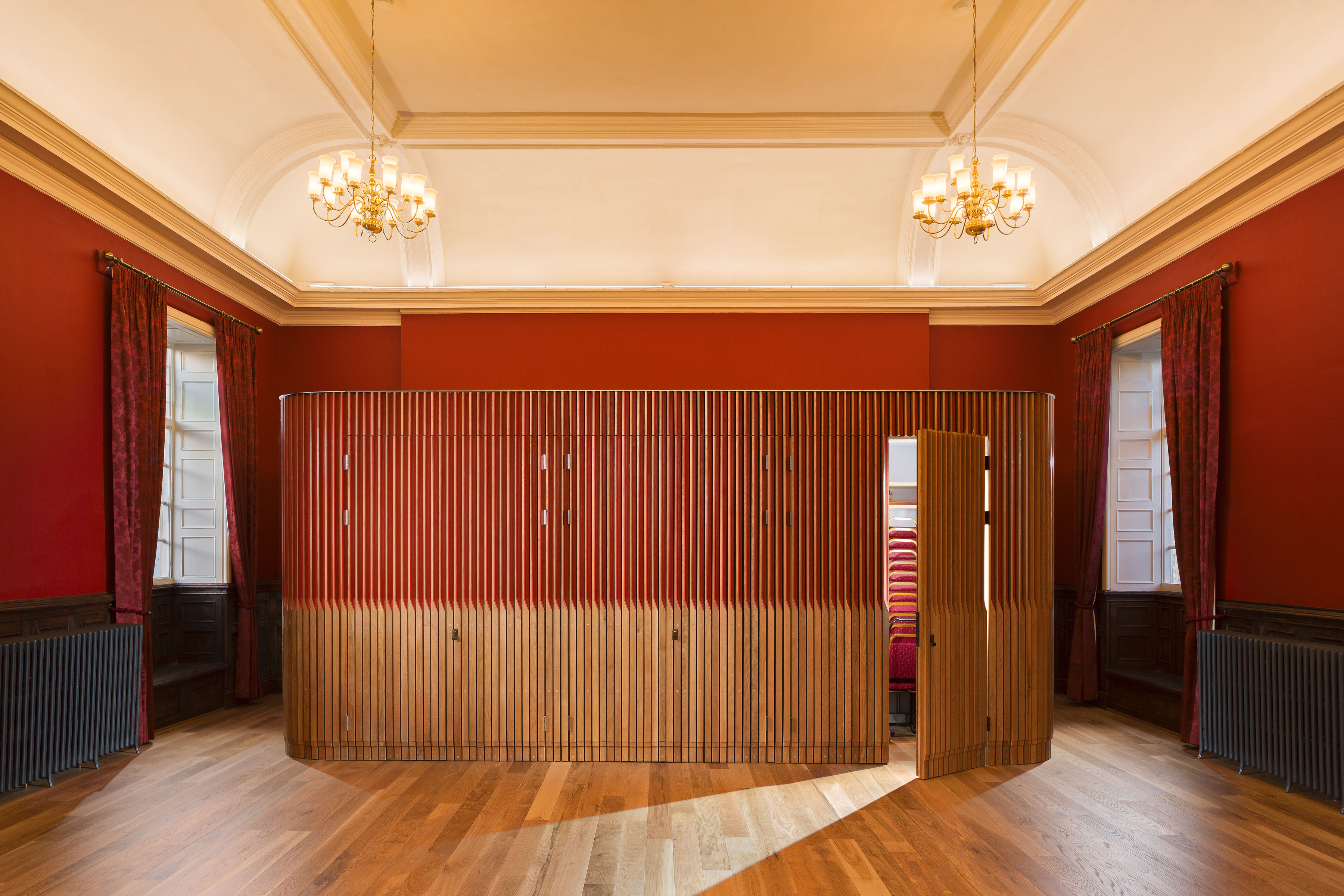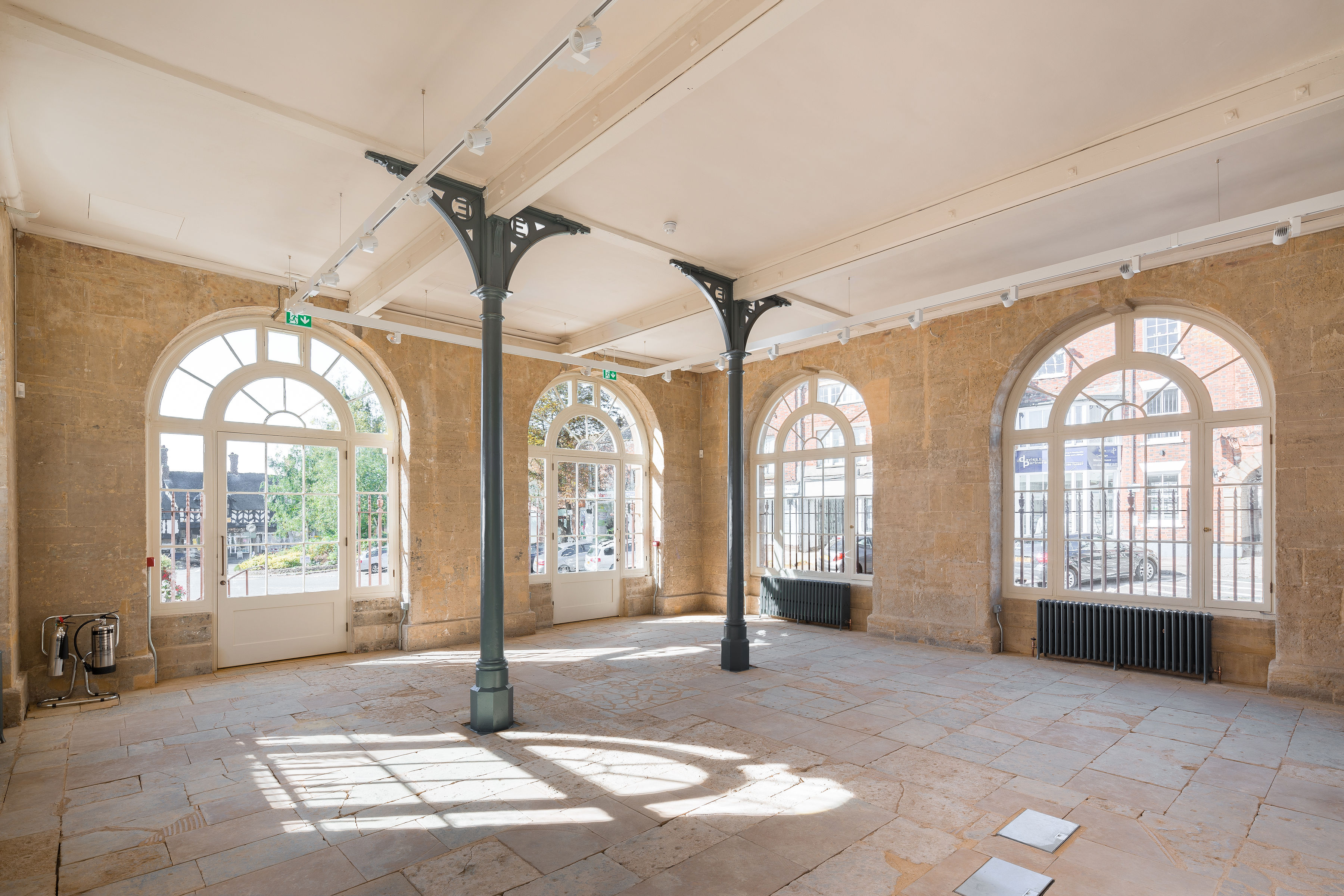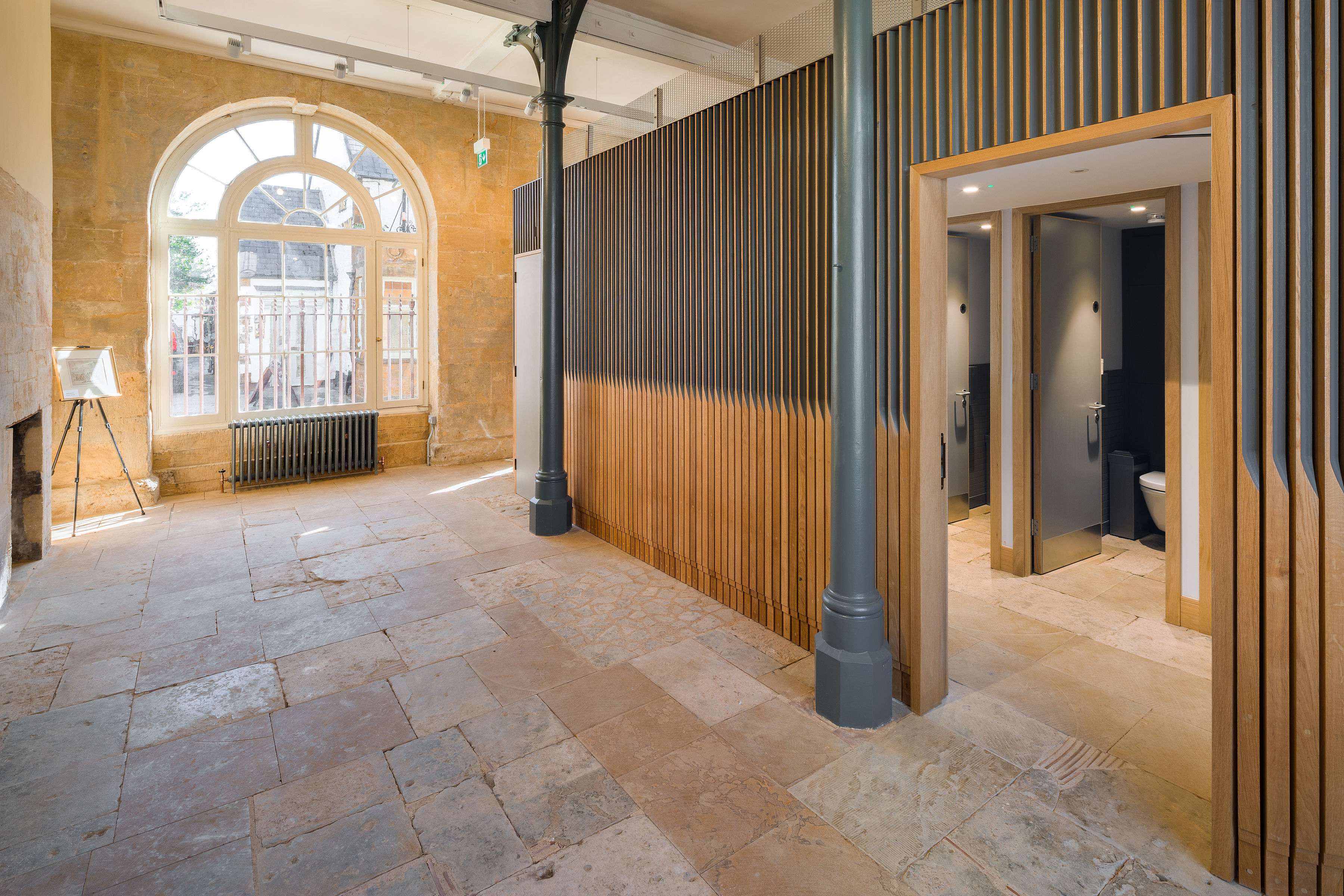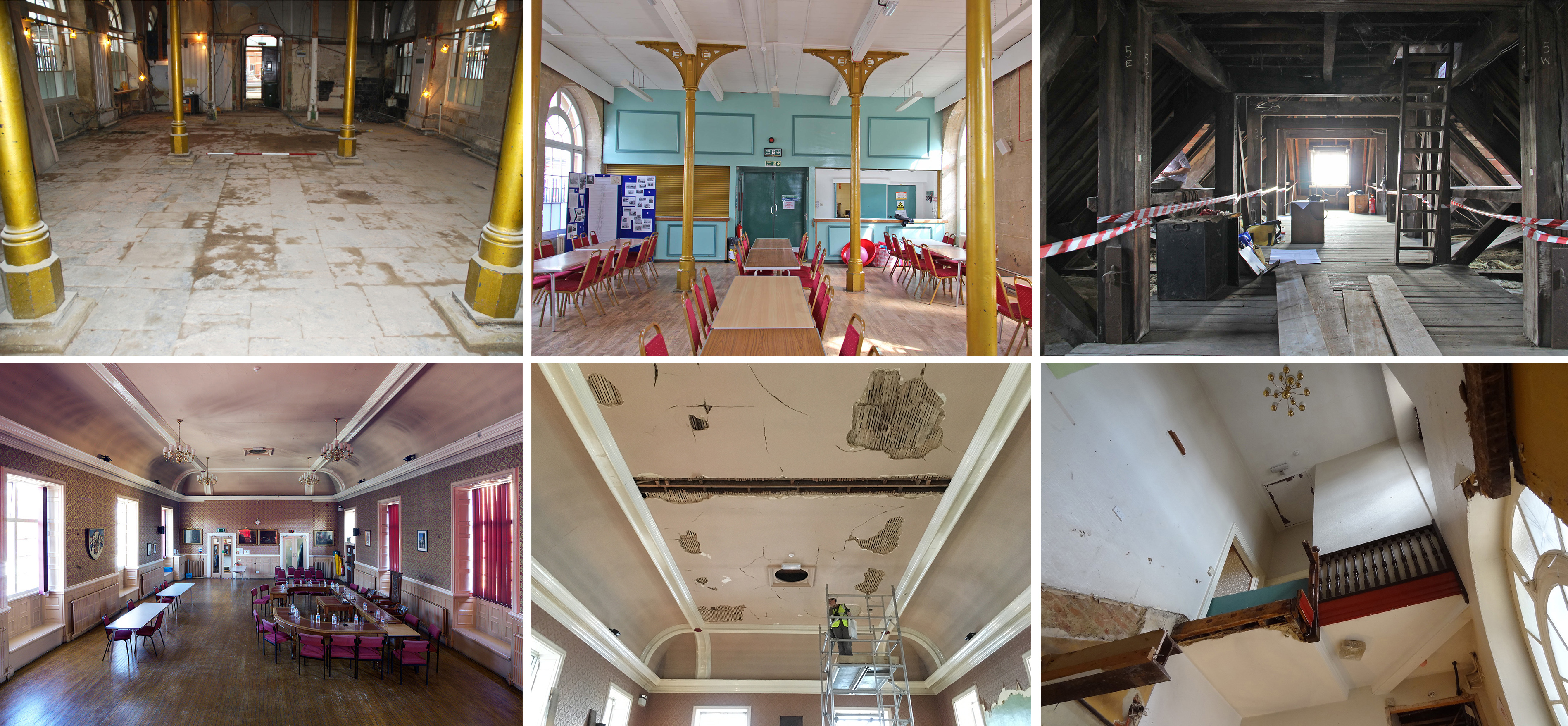Possibly designed by Sir Christopher Wren or Nicholas Hawksmoor during the early 1700s, it has been subject of numerous alterations. In 2013, a survey identified the building as being vulnerable. Its poor condition together with decreasing level of use, diminished the income generated by the building and it could no longer cover its running costs.
Our brief was to carry out a comprehensive restoration & adaptation of the Town Hall in order to address the range of physical issues and improve its long-term financial sustainability. The Town Hall had a long-established relationship with a large number of civic and local community users, who regularly hire space for meetings, activities and functions. Our work included the introduction of new community spaces, a ground floor commercial unit (bistro / café) and an attic holiday let to provide an income for the maintenance and care of the building. The Town Council has retained a presence in the building with a small office. Bold new interventions saw the introduction of a contemporary stair and lift, without detriment to the historic fabric or detracting from the original design.
This was achieved through historical research and building condition surveys, which led to the production of a detailed Conservation Plan and Management & Maintenance Plan. In turn, this enabled us to assess the viability of the proposed new uses and to maintain the building’s authenticity throughout the new works. The Heritage Lottery Fund Grant was secured for the HLF Development and Delivery phases on the basis of our detailed design work.
The project was successfully completed in 2018, alongside an extensive activities programme to engage the local community, allowing them to explore, enjoy, and help protect their heritage asset.
We worked with Rena Pitsilli-Graham, accredited conservation architect, and Ingham Pinnock Associates, economic development and regeneration consultants.
Photography by Tom Pengilley
